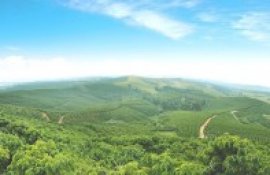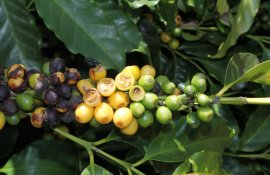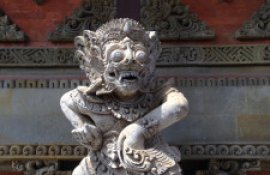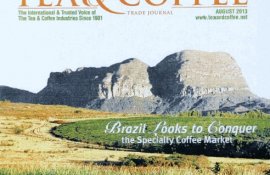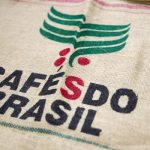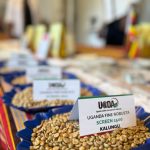CBW chasing the Roya Fungus and its impact in Guatemalan coffee plantations
I am now back from an 11 day trip through the main Guatemalan coffee producing areas.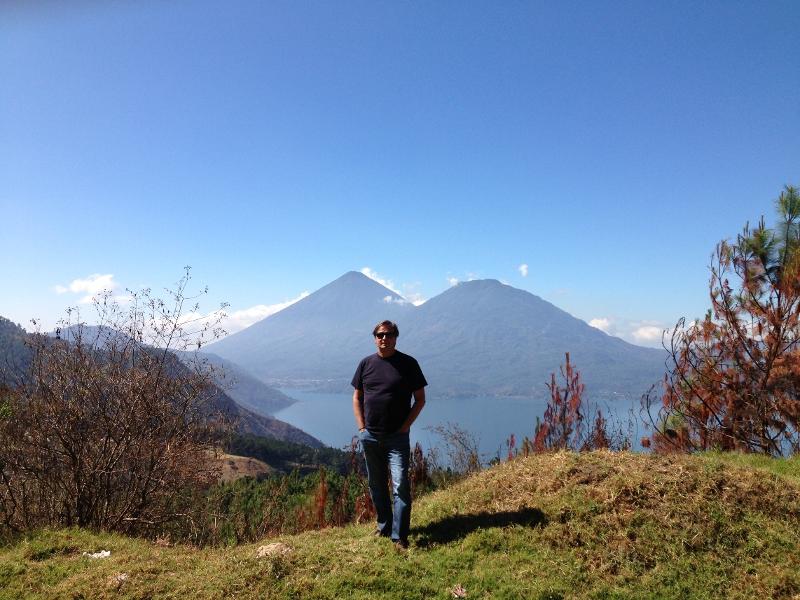
I travelled by car 2.100 km covering the North – South Cordillera.
Of the areas visited, I covered Volcanic San Marcos near the Mexican border, Traditional Atitlan further South, Acatenango Valley, the Antigua Region then the Freijanes Plateau in the Santa Rosa district down South.
The areas visited represent about 75% of all coffees produced in Guatemala.
I met with the top executives and technical department heads.
During my field visits, mostly Fedecocagua Agronomist hosted me but I also visited with Anacafe’s technicians and private sector Finca Agronomists and owners.
Facts
There about 90.000 coffee properties in Guatemala, only about 300 are medium or large fincas from 50 to 450 hectares; all others are small holders with 1 to 5 hectares. Coffee is grown in 2.5% of the 108.889 Sq. Km of the National Territory in altitudes that range from 4.300 to 6.500 feet ( 1.300 -2.000 meters). There are more than 300 microclimates where coffee is grown and 98% of the production is shade grown.
All export qualities, Extra Prime, Hard Bean and Strictly Hard Bean are pergaminio wet processed coffee, all other dry residual low grade coffees are sold to the internal market or for Soluble to Mexico.
The 300 medium and larger Fincas represent 50% of the green coffee volume produced every year, the balance comes from small properties of family driven production.
The Cooperatives support about 30% – 40% of the small holder properties; Anacafe and Fedecocagua have technical support and representation in all producing regions. Bigger Fincas and half thesmall holders, do not aggregate with the Coop structure.
Guatemala’s Export and production figures ranged from 4 million 69 Kg Bags down to 3.7 last crop and probably 3.2 this crop.
Roja has been present in Guatemala for decades, usually managed and under control, 3 crises have happened in the past, all controlled by pruning and crop protection practices.
So what’s different this time and how bad is it?
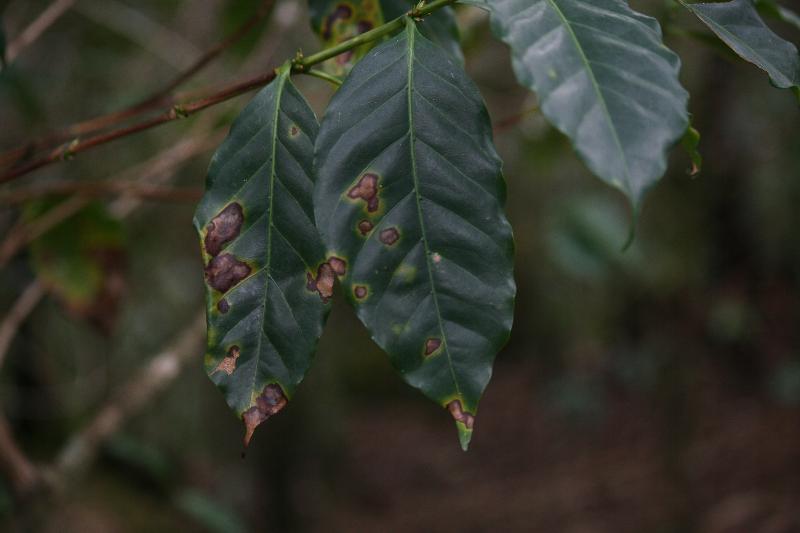 There are three combined reasons for this Roja attack: Climate change with 2 degree Celsius higher temperatures in 2011/2012; a stronger Roja fungus and un-observing producers and institutions.
There are three combined reasons for this Roja attack: Climate change with 2 degree Celsius higher temperatures in 2011/2012; a stronger Roja fungus and un-observing producers and institutions.
It is important to point out that the Roja, never happened above 4.500 feet due to lower temperatures.
This time, with warmer temps, the fungus moved up to the highlands and found no resistance as trees were never treated for the fungus. The epicenter of the Roja was in Acatenango and Jalapaon the Central Cordillera in late 2011, the fact did not trigger a National red flag and counter attack.
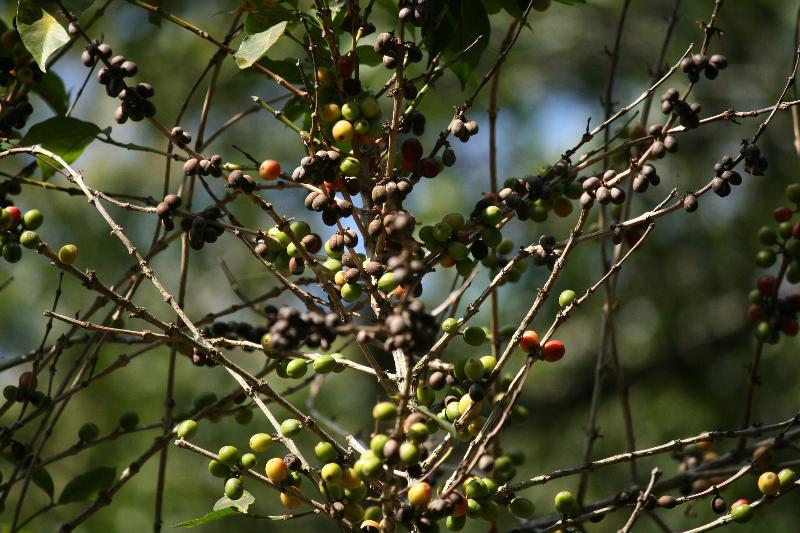 The fungus then spread airborne aggressively during 2012 to all other regions internally and across the borders North and South-bound.
The fungus then spread airborne aggressively during 2012 to all other regions internally and across the borders North and South-bound.
The infestation and impact is very bad to tragic in 90% of the small properties and has impacted in about 30% the medium and larger Fincas.
Conclusion
2012-2013 crop harvested late 12 and ending by March 13:
This crop will be smaller by cycle and result of the Roja lowering productivity, a reduction of 15 to 20% is most likely.
The real factor to consider is how much will be Pergaminio X dry/natural and triage, we will probably see the triage go up in record figures while exportable pergaminio will reduce considerably.
Keep in mind that a Roja struck tree provokes the passage of green fruit to dry directly, not turning ever into ripe, these fruits turn into triage of natural prep, no used for export.
The figures of pergaminio X dry/triage will only indicate how bad next crop will be if nothing gets done and even if correct action is taken.
It will be “somewhat” possible to measure the impact of the Roja by April 30th when Anacafe comes out with the pergaminio exportable volume.
2013/14 and beyond:
In my opinion the Roja will probably reduce in 40 to 50% Guatemala’s next crop, this due to the current condition of the plantations and due to the lack of short term solutions.
The only inverting factor in short term would be the sudden and unlikely weakening or dormancy of the fungus allied to early and plenty rains that cause leaf growth, flowering and fixation between April and October.
In this event, management and control have to be total for the next fruits not to deteriorate and the plants be saved from future pruning or eradication.
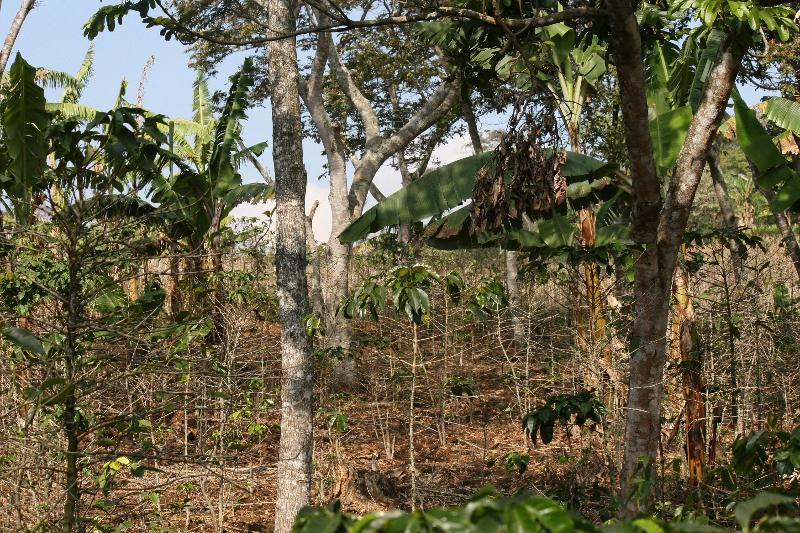 What probably has to happen is a general pruning of all sick areas, plant protection management and ongoing care. This strategy will need financial help to the small holders, alternative agriculture interim practices and lots of management training plus a heavy investment in equipment and chemicals.
What probably has to happen is a general pruning of all sick areas, plant protection management and ongoing care. This strategy will need financial help to the small holders, alternative agriculture interim practices and lots of management training plus a heavy investment in equipment and chemicals.
Unfortunately, a great part of the small holders have no idea of what happened are untrained and will wait until this 3rd quarter of 2013 to finally decide to prune or sell their land. Only the larger Fincas have taken action and pruned now, they will manage their plantations and survive in the short term.
All these factors indicate that this is a 3 to 4 year low productivity cycle in Guatemala, added the social crisis to follow, the result in the short term is a much lesser volume and lower quality.
The Roja is also making a lot of damage in: El Salvador, Nicaragua, Mexico, Costa Rica, Honduras and Panama. This next 13/14 cropcould have a 4 – 5 million bags reduction in volume including Mexico and the Central American countries.
Best Regards,
Christian B. Wolthers




